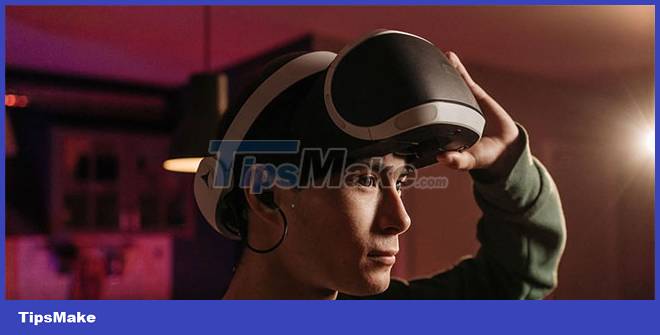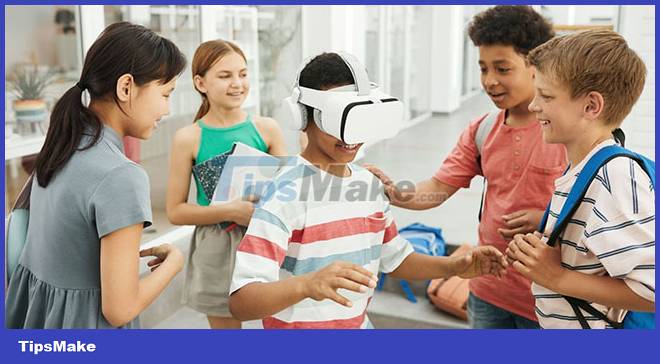Is virtual reality harmful to the eyes?
VR is a way to leave the real world and enter a virtual world where you can do whatever and go wherever you want. All you have to do to enter this virtual world is put on a VR headset, which looks like a fancy pair of goggles, like the Oculus Quest 2 or a device that is merely made of cardboard.
However, is VR inadvertently harmful to the eyes?
Harm of VR to the eyes

Spending a lot of time staring at screens can be harmful to your eyes, and using a virtual reality headset is no exception. However, the effects of prolonged VR use can be exacerbated by the fact that the screen is only a few centimeters away from your eyes. One of the most common harms of VR is eye strain.
According to the Mayo Clinic, some signs and symptoms of eye strain include painful or itchy eyes, seeing shadows, headaches, and neck pain. While eye strain tends to go away fairly quickly with no lasting effects, it's not very comfortable.
Excessive use of VR can also sometimes cause another harm such as eye or muscle twitching. While eye strain usually doesn't last very long, sometimes eye twitching problems can last for hours or even days. Eye twitching isn't always harmful, but it's certainly annoying and distracting.
If you're using a VR headset too often or for long periods of time, your eyes may start to blur - one of the most common symptoms of computer vision syndrome. According to Workplace Health and Safety, you can reduce your risk of this problem by using the 20-20-20 rule: Every 20 minutes, look at a spot at least 20 feet away. in 20 seconds.
VR can also cause motion sickness. Many first-time VR headset users report feeling nauseous and sick afterward, just like you've experienced motion sickness before while riding a boat, driving through a bumpy road, or riding a roller coaster . Motion sickness occurs when your eyes, ears, and body send mixed messages to your brain, making it incomprehensible.
VR games make you feel completely immersed in a simulated world, but while your body isn't moving, your brain thinks otherwise. This can sometimes make you feel uncomfortable and create a feeling of motion sickness.
How to avoid the harmful effects of VR?

While it is helpful to know the potential causes of these unpleasant effects, it is even more important to know how to avoid them. There are many effective ways to deal with eye strain from long-term VR use, including following the 20-20-20 rule and correcting posture.
To avoid eye strain, blurred vision and other side effects, remember to blink! People tend to blink less when staring at digital screens on traditional computers, and so does VR.
So, if you experience these symptoms, remove the headset and let it cool for a few minutes to give your eyes a rest.
If you're too engrossed, taking breaks can be difficult. But rest is important to avoid causing any damage to the eyes. Try to schedule a break for a few minutes after every hour of using the VR headset.
Another tip for wearing a VR headset is that you should customize it to suit your specific needs. Everyone's needs are different, so you'll want to adjust the strap and focal distance of your headphones for comfort.
Can VR benefit the eyes?
Now that you've learned about the negative effects of VR on your eyes, let's consider another aspect: Can VR benefit your eyes? If used properly, it is possible! VR is commonly used in the medical field to identify and treat certain eye problems. In some cases, VR helps doctors identify eye muscle imbalances and treat amblyopia, lack of stereo depth perception, and movement dysfunction.
Vivid Vision is one of the vision therapy programs that uses VR. Both children and adults can use Vivid Vision from the comfort of home. Another great example of VR technology that helps with eye care is IrisVision, a VR headset that helps visually impaired people see the world more clearly.
Meanwhile, Luminopia's VR therapy is an FDA-approved treatment that uses a VR headset to help children deal with lazy eye syndrome, enhance vision, and further reinforce eye health.
The VR Headset allows kids to watch their favorite TV shows and movies in modified form. It splits the content into two images - one for weak eyes and one for healthy eyes. Over time, the weak eye will be strengthened and both eyes can begin to function equally.
VR therapy is a particularly fun and engaging treatment for children. Instead of sending children to surgery, wearing eye patches or using eye drops, they can wear a VR headset and have fun.
Whether you're climbing a skyscraper, exploring the California coast, or playing an action game like Resident Evil 4, VR can provide endless fun.
The effect of VR on the eyes depends on how you use it. In moderation, you should be able to avoid the negative effects this technology can have.
You should read it
- Top 8 best virtual reality glasses 2018
- 4 development trends of virtual reality technology in 2019
- Invite Firefox Reality experience, the browser for virtual reality world
- How to use VR virtual reality technology for iPhone?
- 9 best virtual reality apps for Android
- 6 key differences between Metaverse and virtual reality
- Virtual reality experience locations in Hanoi and HCM
- Top cheap quality virtual reality glasses
- 12 super attractive AR apps for Android people
- 5 cool, free virtual reality apps for iPhone
- Experience with 5 applications for virtual reality glasses
- Top 3 best virtual reality games






 Top 8 best virtual reality glasses 2018
Top 8 best virtual reality glasses 2018 4 development trends of virtual reality technology in 2019
4 development trends of virtual reality technology in 2019 Invite Firefox Reality experience, the browser for virtual reality world
Invite Firefox Reality experience, the browser for virtual reality world How to use VR virtual reality technology for iPhone?
How to use VR virtual reality technology for iPhone? 9 best virtual reality apps for Android
9 best virtual reality apps for Android 6 key differences between Metaverse and virtual reality
6 key differences between Metaverse and virtual reality